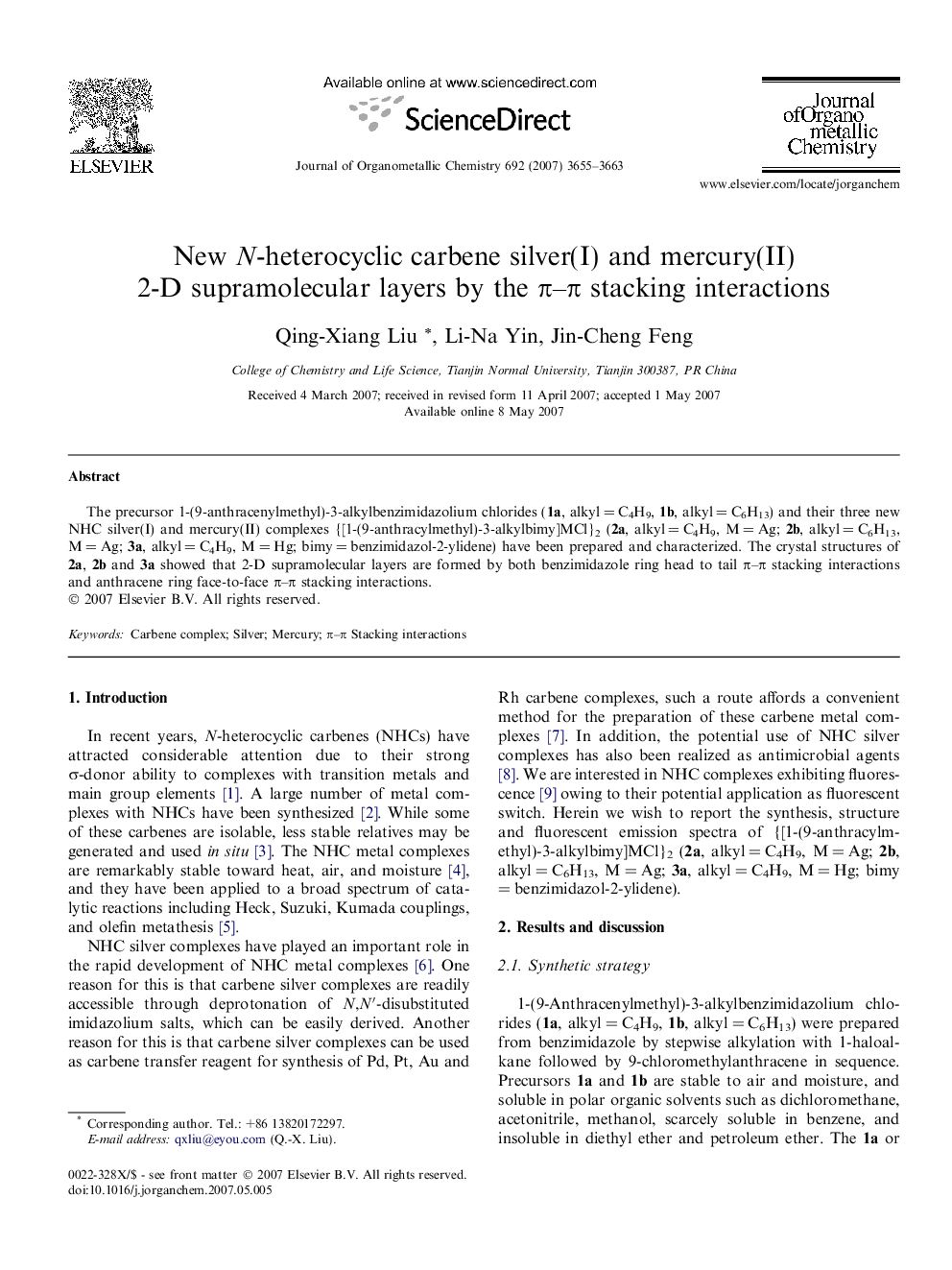| Article ID | Journal | Published Year | Pages | File Type |
|---|---|---|---|---|
| 1326520 | Journal of Organometallic Chemistry | 2007 | 9 Pages |
The precursor 1-(9-anthracenylmethyl)-3-alkylbenzimidazolium chlorides (1a, alkyl = C4H9, 1b, alkyl = C6H13) and their three new NHC silver(I) and mercury(II) complexes {[1-(9-anthracylmethyl)-3-alkylbimy]MCl}2 (2a, alkyl = C4H9, M = Ag; 2b, alkyl = C6H13, M = Ag; 3a, alkyl = C4H9, M = Hg; bimy = benzimidazol-2-ylidene) have been prepared and characterized. The crystal structures of 2a, 2b and 3a showed that 2-D supramolecular layers are formed by both benzimidazole ring head to tail π–π stacking interactions and anthracene ring face-to-face π–π stacking interactions.
Graphical abstract1-(9-Anthracenylmethyl)-3-alkylbenzimidazolium chlorides (1a, alkyl = C4H9, 1b, alkyl = C6H13) and their three new NHC silver(I) and mercury(II) complexes [1-(9-anthracylmethyl)-3-alkylbimy]MCl2 (2a, alkyl = C4H9, M = Ag; 2b, alkyl = C6H13, M = Ag; 3a, alkyl = C4H9, M = Hg; bimy = benzimidazol-2-ylidene) have been prepared and characterized. The crystal structures of 2a, 2b and 3a showed that 2-D supramolecular layers are formed by both types of π–π stacking interactions.Figure optionsDownload full-size imageDownload as PowerPoint slide
